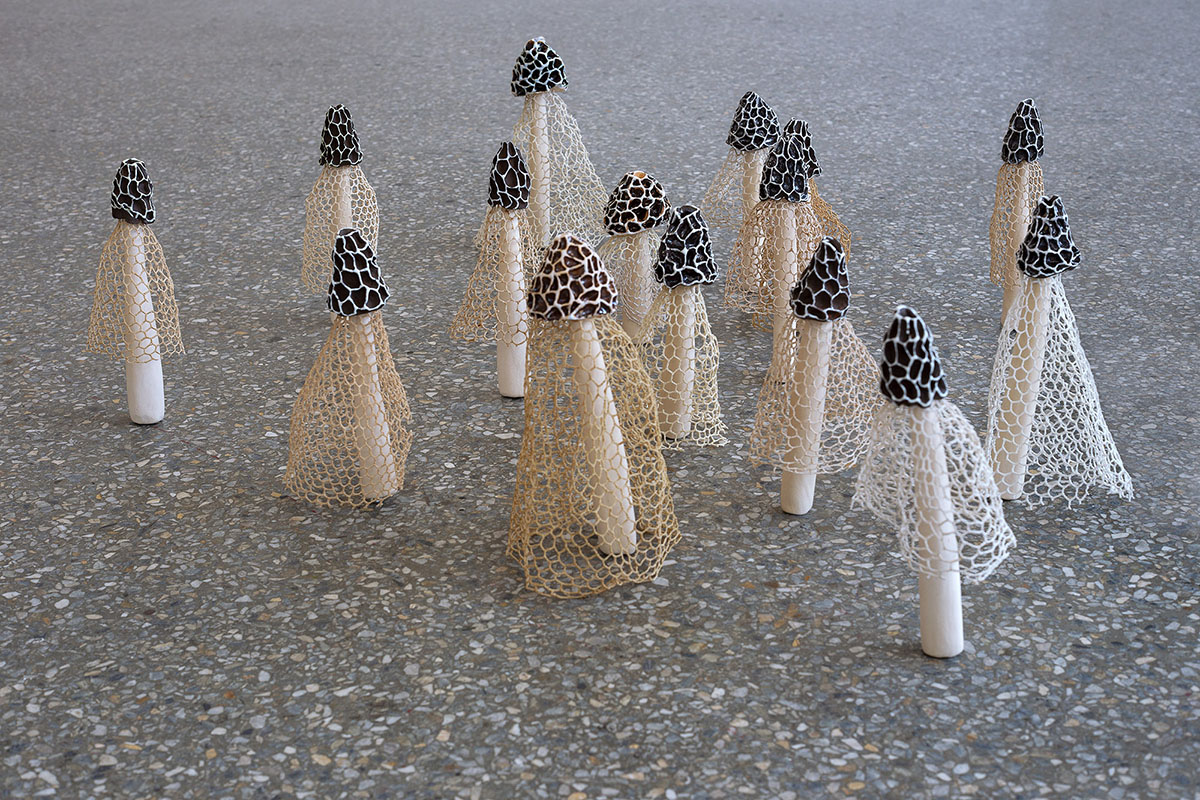„Phallus indusiatus”
installation (fired clay, glaze, cotton thread) | variable dimension
2014Phallus indusiatus is one of the most peculiar types of fungi. In appearance it resembles its Polish cousin, Phallus impudicus, from which it is distinguished by the presence of a delicate lacy net that hangs from beneath the cap. Another characteristic of this species is that it is a saprobiont. It absorbs energy from dead organic remains, breaking them into simple compounds, and absorbs liquid matter decomposed by external digestion. It is an important actor involved in the circulation of matter in ecosystems and thus in the circulation of elements across the biosphere (e.g. carbon, nitrogen, hydrogen, oxygen, sulphur, phosphorus and others).
Digesting dead matter, the fungus brings to mind the Ideonella sakaiensis bacterium, recently discovered by Japanese biochemists. It is capable of breaking down PET plastic, which is, among other things, the main component of the Great Pacific garbage patch. The mutation of this peculiar fungus could, in the near future, after the apocalypse, digest both human and animal remains, as well as the rubbish that we leave behind.
Text by Joanna Kobyłt (from the leaflet accompanying the exhibition Retrogradation)










